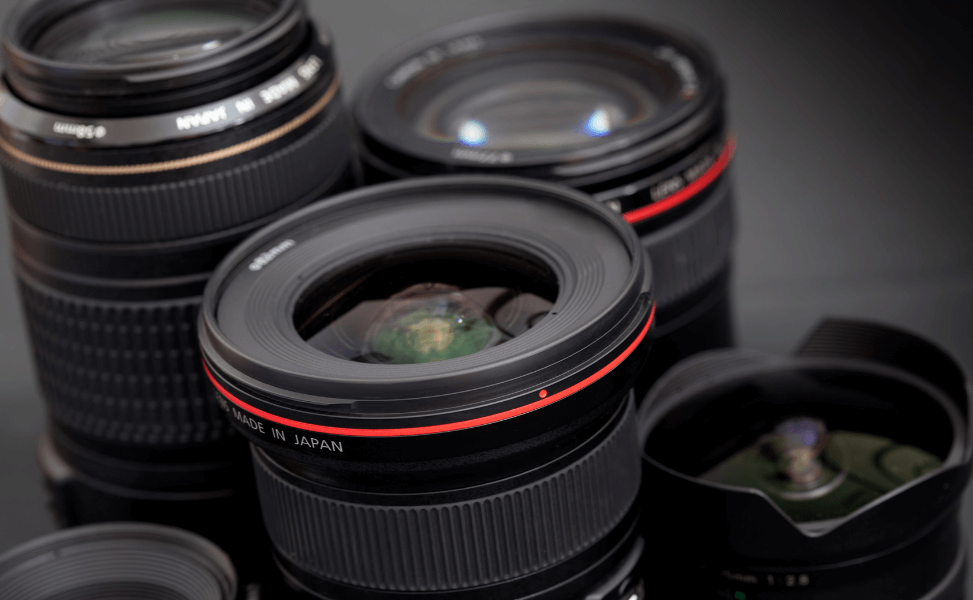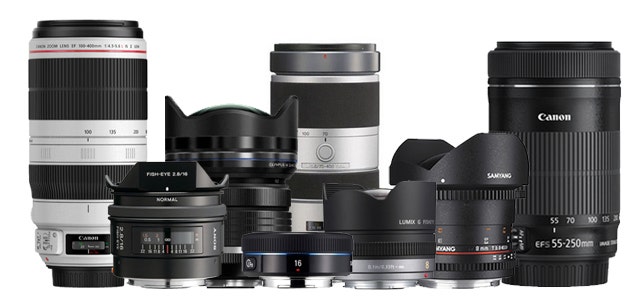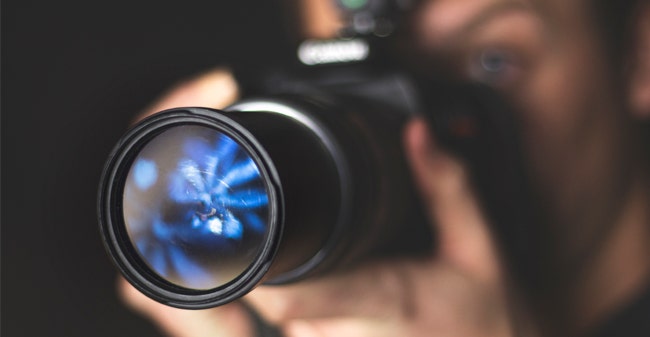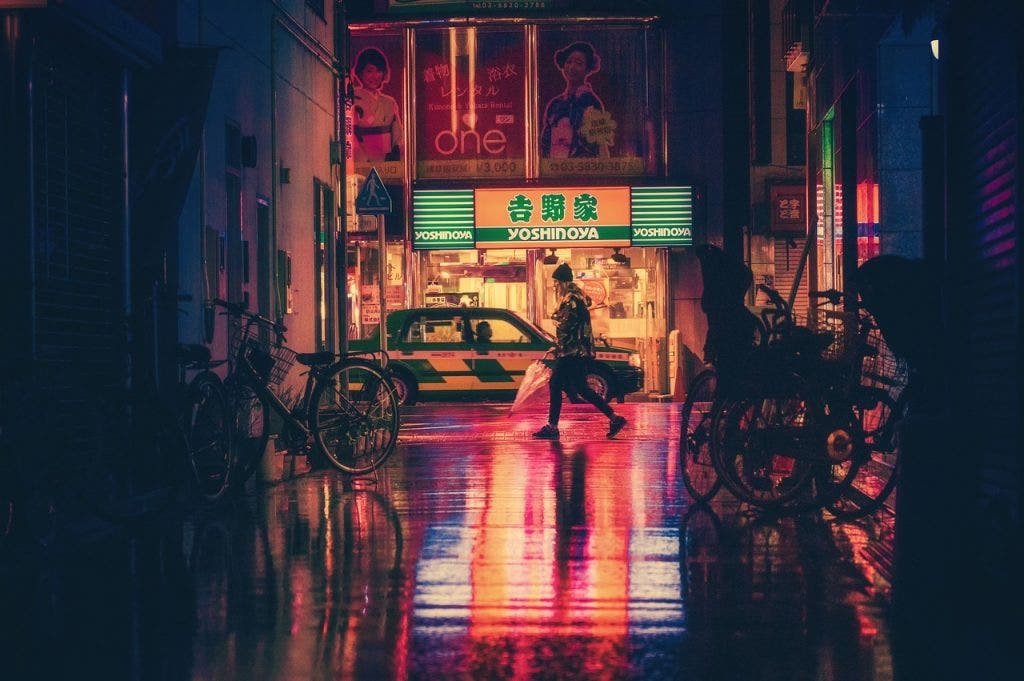
Since they serve as your portal into the world of photography, lenses are undoubtedly the most crucial component of your camera setup; it goes without saying that they make or break your photographs.
Images are the result of what is projected into your imaging sensor in your lens and ultimately lenses control the photograph. As a result, many photographers would rather shoot with a good lens and a mediocre camera than the other way around.With a range of camera lenses out there, we wanted to help you navigate the range to understand what you need in a camera lens. If you’re keen to learn more about camera lenses, check out our article Everything to Know About Camera Lenses on the Camera House blog.

What Does a Lens do in Camera?
Camera lenses, used in conjunction with a camera body, are able to create photographs by passing light through to the body. Glass components in the shape of lenses are used to create precise light bends. Each component serves a distinct purpose, and they all work harmoniously together to capture the perfect image.
Some of these components are fixed to the lens' barrel, while others are mobile. These enable zooming, focusing, or image stabilisation. We’ll get into these elements further in the blog.
All camera lenses are built differently to allow them to be used in different situations, such as macro photography, landscapes, portraits, and more.
What Are The Different Types of Camera Lenses?
There are a wide variety of lenses out there, with something to suit every style of photography. See below the different lens categories and what they’re best for.
- Telephoto Lenses: These lenses are wonderful to capture objects far off in the distance. This is due to the zoom lens set up with multiple focal points. Nightsky photographers especially find these lenses great to be able to capture images of the stars.
- Macro Lenses: Using this kind of lens, macro photography at an extreme close-up is possible. Macro lenses are excellent for wildlife photography due to the amount of detail they capture.
- Wide-Angle Lenses: For cramming a vast region into your frame, wide-angle lenses are perfect. They take the best landscapes and cityscape shots.
- Standard Lenses: Standard lenses can be utilised for a wide range of photography styles. Their focal lengths are in the midrange, typically ranging from 35mm to 85mm. They are the perfect starting point for any beginner.
- Speciality Lenses: There is a range of specific lenses for different photography niches. Think fisheye lenses, tilt-shift lenses, infrared lenses, and more.
Camera Lens Characteristics
Focal Length
Once you've figured out these fundamentals of camera lenses, it's time to consider the focal length, which is a crucial component of any lens.
The focal length, which is measured in millimetres, is the space between the lens and the image sensor when the subject is in focus. Zoom lenses provide the range between the minimum and maximum focal lengths.
Without getting too technical, the wider the field of view will be the smaller the focal length measurement. An 18mm focal length lens, for instance, will give a broad shot that is ideal for landscape photography. A 200mm lens, on the other hand, will create a close-up image.
| Focal Length (35mm equivalent) | Lens |
| <20mm | Extreme wide angle |
| 21-35mm | Wide angle |
| 35-70mm | Normal |
| 70-135mm | Telephoto |
| 135-300mm | Extreme telephoto |
Did you know? The human eye sees at roughly a 50mm focal length.
Therefore, it’s important to establish what you’ll be using this new lens for. If you’re after a beautiful landscape shot of sunset down on the beach, you’ll prefer a wide-angle/low focal length. If you’re after portraits or a close-up zoom of a bird, the small angle/high focal length lens will suit your style of photography better.

Aperture
The opening in a lens through which light enters the camera is known as an aperture. If you merely consider how your eyes function, the concept is simple to grasp. The size of your pupil is controlled by the iris in your eyes, which expands or contracts when you travel between bright and dark situations. In cameras, this is displayed as the f stop. For example, f/2.8.
Your photographs can gain depth by using aperture to adjust the depth of field. Aperture can be used to create a lovely shallow focus effect with a blurred background or alternatively shap images from the immediate foreground to the far-off hotizon. This is best for portrait photography.
Check out our article What is Apeture? Understanding Apeture on the Camera House blog.

Image Stabilisation
Image stabilisation is a technique that allows your camera lens to correct for unintentional movement to increase the likelihood that you will capture a sharp image. A floating lens element is used in an in-lens stabilisation system.
This component is managed by a microcomputer that can recognise movement and responds by moving in the opposite direction to counteract the effect of shaking. Technology that moves the sensor rather than the lens is what is used for in-body image stabilisation. Both systems can be compared to highly technological shock absorbers.
Not all lenses come with an in-built stabilisation system, so if you know you’ll be moving the camera a lot while shooting, it’s an important feature to look out for.
Autofocus
To focus on a point or area that has been manually or automatically chosen, good autofocus (or AF) in a lens is important. One or more sensors are used by autofocus systems to determine the correct focus. While some AF systems employ an array of sensors, others depend on a single sensor. Though the latter can be designed to prioritise its metering to the same area as one or more of the AF sensors, the majority of SLR cameras use through-the-lens optical sensors with a separate sensor array providing light metering.
In most cases, manual focus with a regular viewfinder is slower and less accurate than through-the-lens optical autofocusing. For beginners, look for a lens with an autofocus system to make focusing on subjects much easier.
Format – DX v FX
Any lens will have either a DX or FX format. You can find this out by looking for the symbol on the lens.
While DX lenses can only be used with the smaller of your camera's sensors, FX-format lenses can be used with full frame size sensors. Without getting too technical, this simply means that a DX-format lens may crop your photo because the camera's sensors have different sizes. When looking for lenses, keep this in mind for DX formats so you can adjust your photos accordingly.

How to choose the right camera lenses
When it comes to lenses, striking the right balance between cost, features and size is very important to match individual requirements. The first and most important thing to consider is what you’re going to use the lens for.
A photographer who is looking to shoot in the nighttime will require a lens with an aperture optimised for low-light conditions. Photographers looking to capture sport or nature will require an all-rounder with a little more speed than average. Those who have landscapes front-of-mind will need to consider the wide angle of the lens.
Ultimately, the more you know about lenses, the better equipt you’ll be to make the right decision for your needs. Hopefully, this guide has provided you with some guidance, but our friendly and knowledgeable staff at Camera House are always happy to help you find the right lens in-store or online!
Camera House Has a Great Range of Camera Lenses
Take advantage of Camera House’s knowledgeable staff in-store and online and ask them all about which camera lens is right for you! Check out our shipping information online and enjoy flat-rate delivery Australia-wide, or check out our store locator to visit a Camera House store near you.
